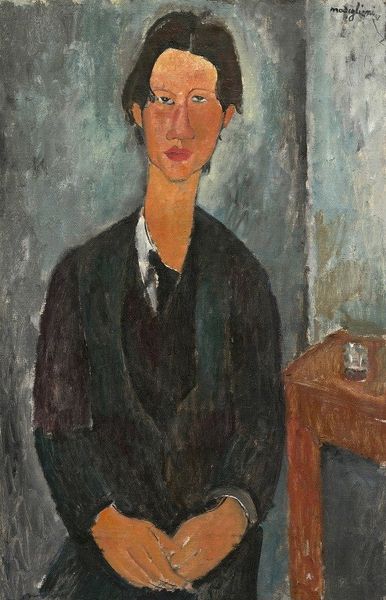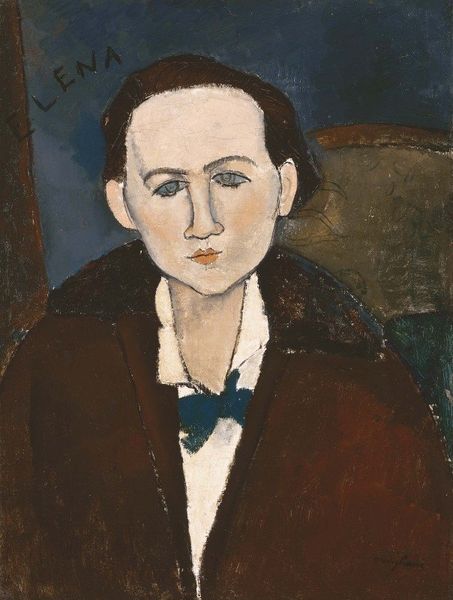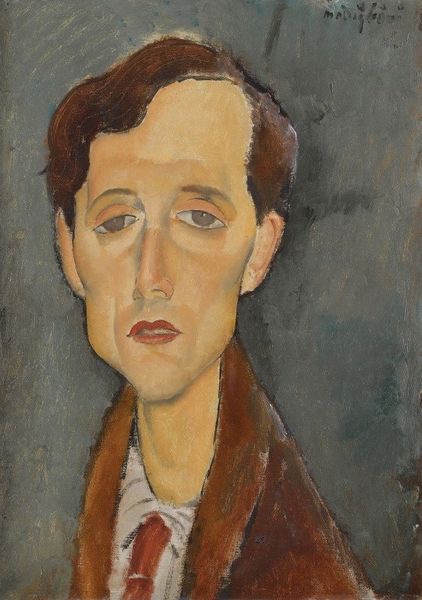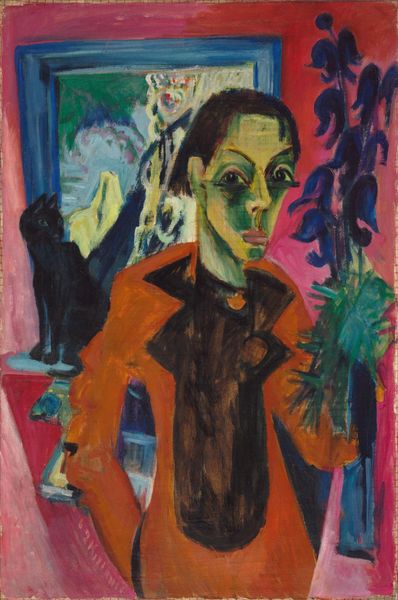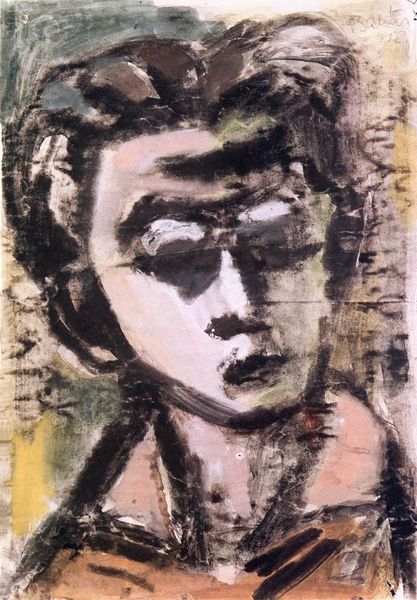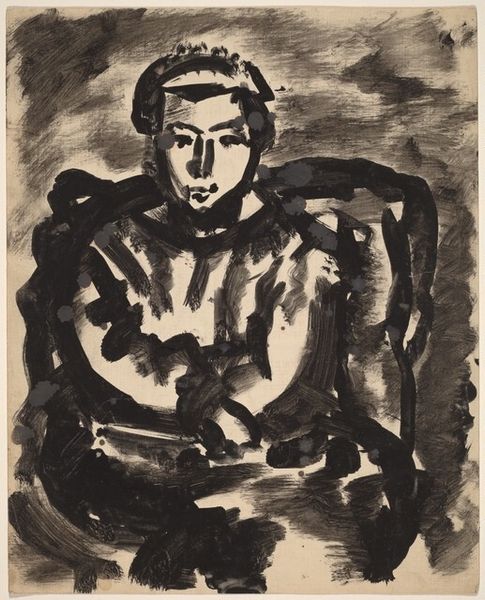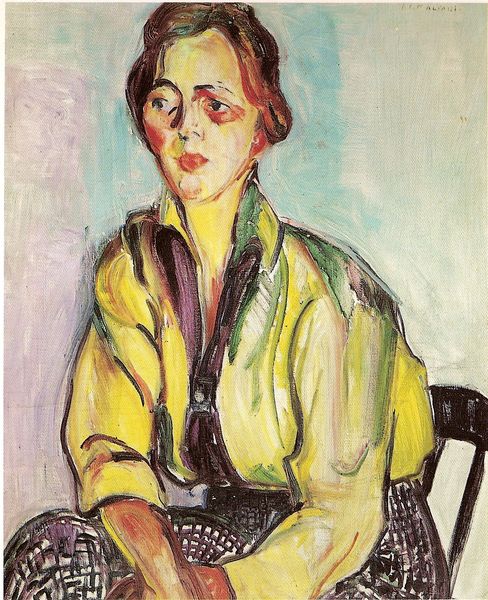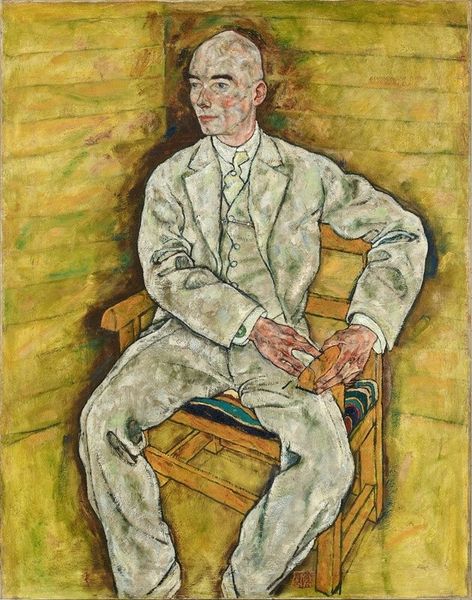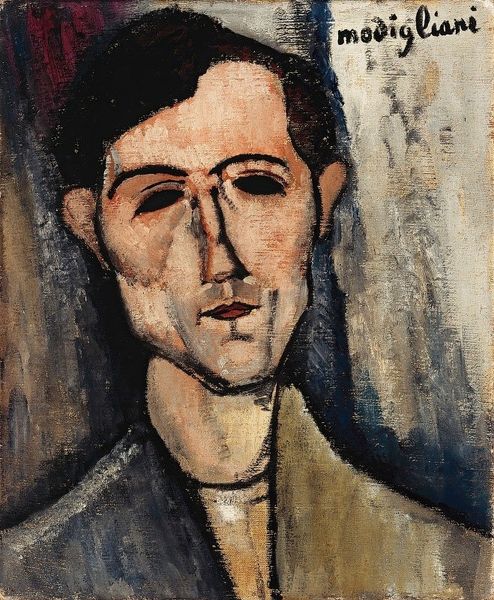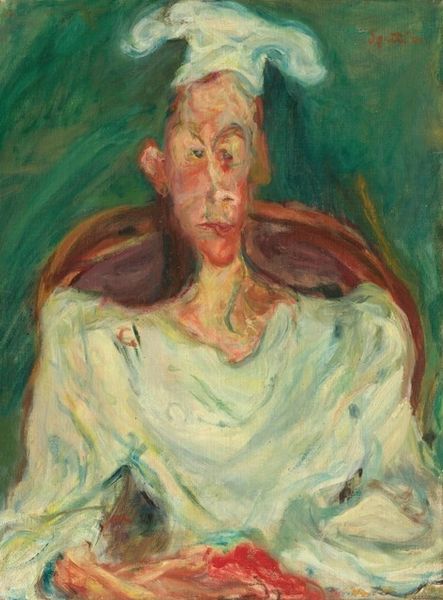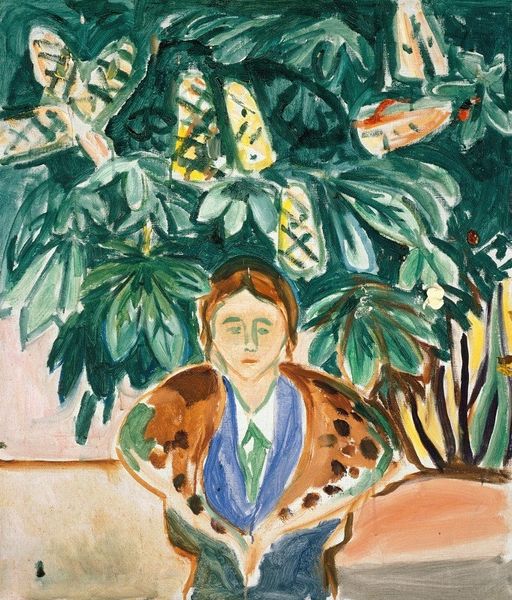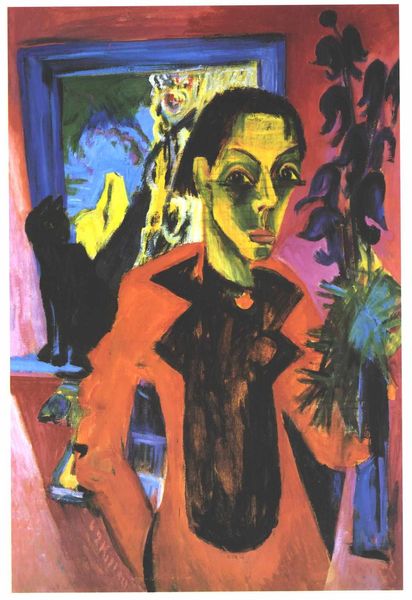
Copyright: Public domain US
Henri Matisse painted "Renée, Green Harmony" with oil on canvas, though the exact date remains uncertain. The harmony of greens is more than just aesthetic; it speaks to the cultural values of early 20th-century France, a society grappling with modernity while still cherishing its traditions. Matisse, trained in academic art, uses the genre of portraiture but departs from its conventions. He simplifies form and emphasizes colour, reflecting a progressive shift in artistic expression. His break from realism, though controversial at the time, mirrored the broader societal changes of the era. The art market and patronage networks were evolving, allowing artists to experiment more freely. To understand Matisse fully, we must look into the artistic debates, the gallery system, and the critical reception of his work during his lifetime. These socio-economic and cultural factors shaped his artistic choices. Art history, therefore, becomes an exploration of the dynamic relationship between individual creativity and collective experience.
Comments
No comments
Be the first to comment and join the conversation on the ultimate creative platform.
